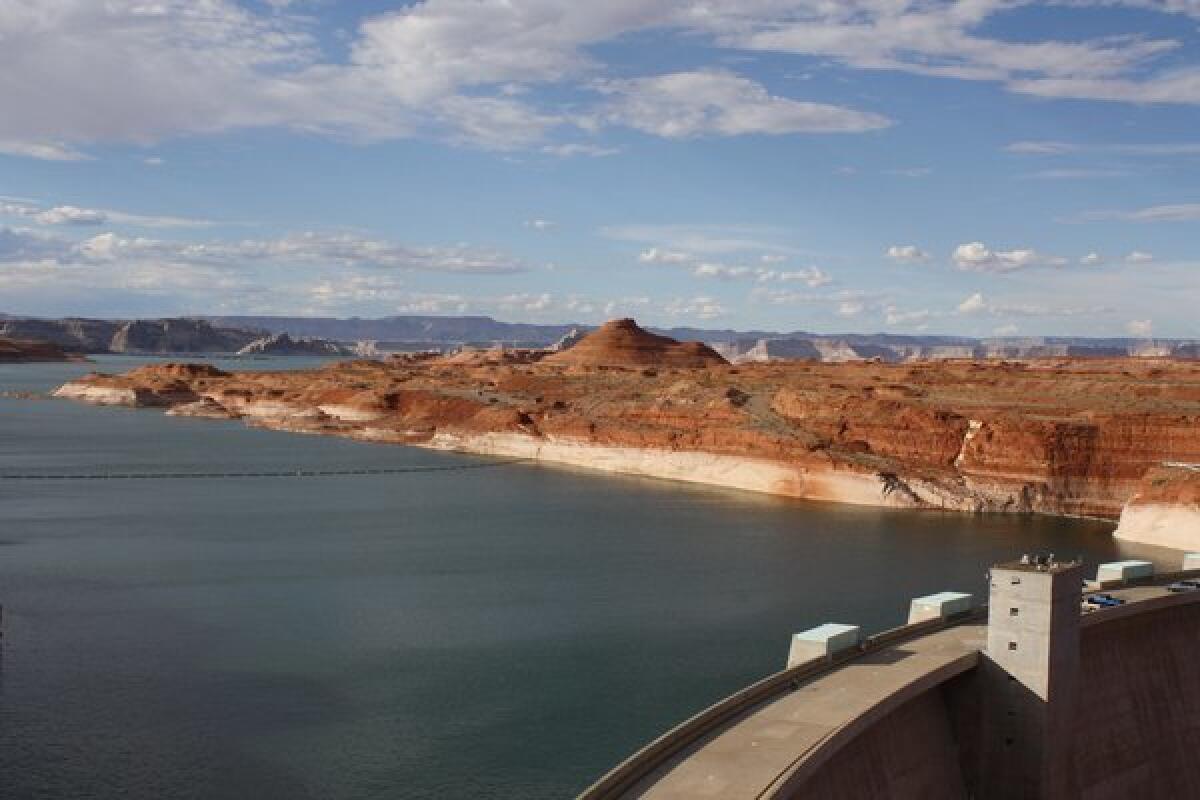Climate change could cut Western water runoff by 10%

- Share via
Another climate change study is projecting declines in runoff in many parts of the West, a scenario that would put more pressure on the region’s water supplies.
Using new model simulations, scientists at Columbia University’s Lamont-Doherty Earth Observatory expanded on 2007 research that predicted a drier future for the Southwest.
The reasons involve more than a drop in precipitation -- which is actually expected to increase in some areas that are critical to Western water supplies. Rather, rising temperatures will cause greater evaporation from plants and the ground, reducing soil moisture and water runoff into rivers and streams.
Researchers concluded that average annual runoff will fall by about 10% in the three regions examined in the study: California-Nevada, the Colorado River headwaters and Texas.
The 10% drop in Colorado River flows would be on a par with the worst droughts recorded on the river in the last century, though it is less severe than the 12th century megadrought revealed by tree-ring studies.
“It may not sound like a phenomenally large amount, except the water and the river is already over-allocated,” said climate scientist Richard Seager, the paper’s lead author. The Colorado’s flows have proven to be less than thought when the river’s supplies were divvied up among California and the other six basin states in 1922.
In the Colorado headwaters region, average precipitation is expected to increase in all seasons, but greater evaporation will reduce soil moisture in the spring, summer and fall.
Central and Northern California and Nevada should get more precipitation in the winter but both states will get less the rest of the year. Coupled with more evaporation, that will result in an overall drop in runoff and soil moisture.
Winters will be drier in Southern California, southern and central Arizona and New Mexico, according to the model runs.
Though climate change simulations have grown more sophisticated, the authors noted that global models still can’t fully account for the West’s complex topography -- and how it influences regional climate patterns.







